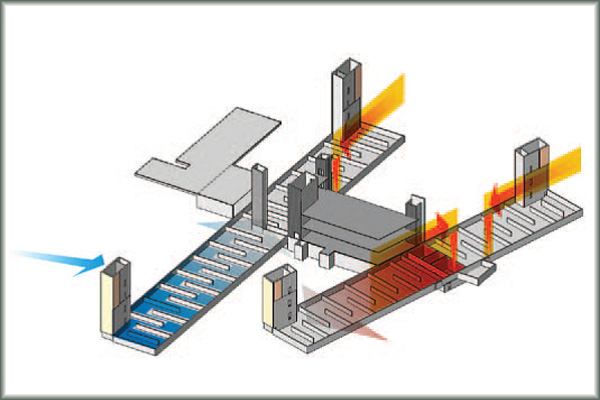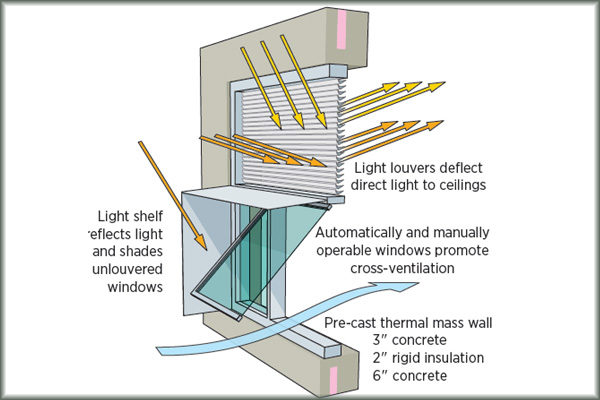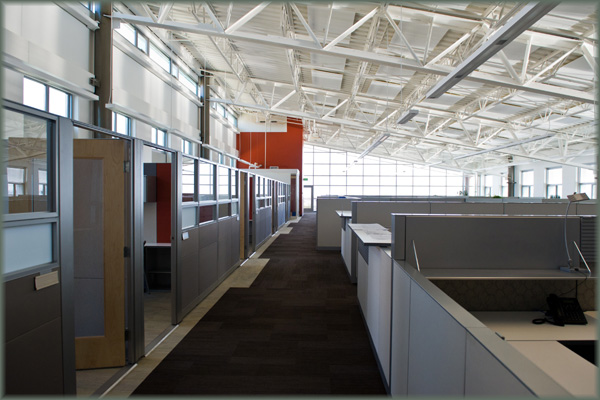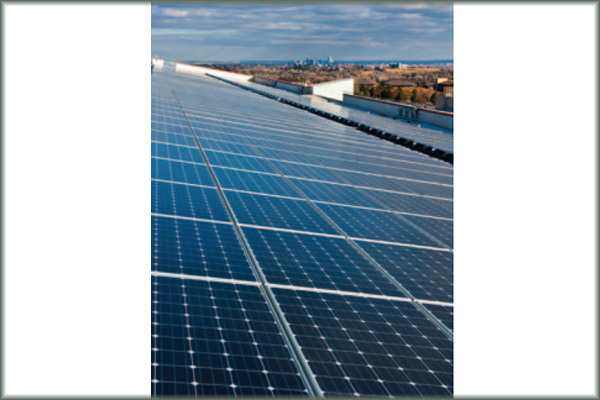NREL Research Support Facility
Passive Design Strategies
The design maximizes passive architectural strategies that take advantage of the climate and drive energy use reduction.
Design strategies dramatically reduce the energy use first; then an extremely efficient lighting system, radiant cooling and heating system, and an underfloor air ventilation system further improve the energy performance of the building.
Building orientation and form
-
- Building orientation and geometry minimizes east and west glazing.
- North and south glazing is optimally sized and shaded to provide daylighting while minimizing unwanted heat loss and gain.
- Building floor plate is narrow (60′ wide) enabling daylighting and natural ventilation for all occupants.
- Window to wall ratio for north and south walls is 25% and the windows are organized into daylighting and view sections.
- Massive concrete structure in the RSF crawl space stores thermal energy and provides additional capacity for passive heating.
Daylighting:
-
- All the workstations are day lit. No employee is seated at more than 30 feet from a window.
- Daylight enters the upper portions of the south-facing windows and is reflected to the ceiling and then deeper into the building with light-reflecting devices
- An open office plan with low profile workstations allows proper daylighting
- The building form evolved in response to daylighting penetrating deep in the building.
- Highly reflective acoustical ceiling panels maximize daylight distribution
- Daylighting exceeds 30 foot candles during sunny sky conditions, providing all required lighting.
Building envelope and fenestrations
-
- All the glazing in the vision section of fenetrations on the north and south sides of the building is triple glazed, and thermally broken window frames increase the energy efficiency of the units.
- Windows on the north elevation are slightly larger than those on the south elevation as they are less prone to glare
- To reduce glare on the south facade, overhangs shade the lower vision glass.
- Window shading is designed keeping in mind orientation of the fenestration and position of openings.
- Occupants can open some windows to bring in fresh air and cool the building naturally.
- Electro chromic and thermochromics glazing are provided in the fenestrations of west and east façade respectively. These are further shaded with recessed balconies
Thermal mass
-
- Precast concrete insulated panels: A thermally massive exterior wall assembly using an insulated precast concrete panel system provides significant thermal mass to moderate the building’s internal temperature.
- Thermal Labyrinth:
-
- The building includes a large thermal labyrinth under the two main office wings.
- The labyrinth can store heat from the transpired solar collectors on the south facade of the building. It also serves as a thermal sink for rejected heat from the building’s data centre, dramatically lowering the cooling load of the data centre year-round.
- The labyrinth can warm outside air by 5–10°F. and acts as a thermal battery.





